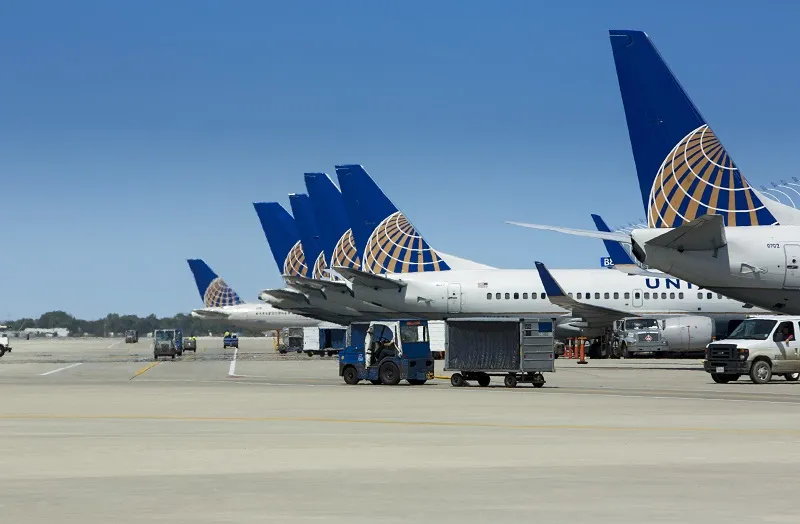
COVID sees lowest US airfares in 25 years.
Apr 21, 2021

Amid the ongoing impacts of the COVID-19 pandemic, airfares in the United States have reached their lowest levels in a quarter-century. This significant drop in ticket prices is attributed to reduced travel demand and increased competition among airlines striving to attract passengers. With many travelers still hesitant to fly, airlines have responded by offering attractive deals and promotions. The decrease in fares has made air travel more accessible for a broader audience, allowing families and individuals to consider trips that may have previously been out of reach. This trend reflects both the challenges faced by the industry and the shifting landscape of travel.
The Impact of COVID-19 on Airfare Prices
The COVID-19 pandemic has led to unprecedented changes in the travel industry, resulting in the lowest airfares seen in the United States over the last 25 years. With travel restrictions, safety concerns, and economic uncertainty, airlines have had to adjust their pricing strategies to attract travelers. This article explores the factors contributing to these low airfares and how travelers can take advantage of this unique situation.
Factors Contributing to Low Airfares
Several key factors have played a role in driving down airfare prices during the pandemic:
- Decreased Demand: The pandemic caused a significant drop in travel demand, with many people canceling or postponing their trips. This reduction in passenger numbers forced airlines to lower their prices to fill seats.
- Increased Competition: As airlines sought to stimulate demand, they engaged in price wars, offering competitive fares to lure customers back to the skies.
- Government Assistance: Financial support from the government helped airlines stay afloat during the pandemic, allowing them to maintain lower fares without incurring substantial losses.
- Flexible Booking Policies: Airlines introduced more flexible booking options, making it easier for travelers to change or cancel their plans, which encouraged more people to book flights.
Airfare Trends: A Historical Perspective
To understand the significance of the current airfare situation, it's essential to examine historical trends in airfare pricing. The following table illustrates the average domestic airfare in the U.S. over the past 25 years:
| Year | Average Domestic Airfare |
|---|---|
| 1998 | $297 |
| 2008 | $363 |
| 2018 | $359 |
| 2020 | $260 |
| 2021 | $286 |
| 2022 | $317 |
As depicted in the table, the average domestic airfare has seen fluctuations over the years, but the dip in 2020 stands out as particularly significant. The drop to $260 represents a stark contrast to previous years, underscoring the impact of COVID-19 on the travel landscape.
Travelers' Opportunities Amid Low Airfares
With airfares hitting historic lows, travelers have a unique opportunity to explore new destinations or return to favorite ones at a fraction of the usual cost. Here are some tips on how to make the most of this situation:
- Book in Advance: While last-minute deals can be tempting, booking flights several weeks or months in advance can often yield lower prices.
- Be Flexible with Dates: Traveling during off-peak times or on weekdays can lead to significant savings. Use fare comparison tools to find the best deals.
- Sign Up for Alerts: Many travel websites offer fare alerts that notify you when prices drop for specific routes, allowing you to snag the best deals.
- Consider Alternative Airports: If you're flying to a major city, check nearby airports. Sometimes, flying into or out of smaller airports can save you money.
The Future of Air Travel and Airfares
As the world begins to recover from the pandemic, the future of air travel remains uncertain. While some experts predict that airfare prices will gradually rise as demand increases, others believe that competitive pricing may continue as airlines look to regain their customer base. Here are some factors to consider:
- Vaccination Rates: As vaccination rates rise and international travel restrictions ease, demand for air travel is expected to rebound, potentially leading to higher fares.
- Economic Recovery: The pace of economic recovery will play a crucial role in determining consumer spending on travel. A strong recovery may lead to increased demand and higher prices.
- Technology and Innovation: Advances in technology may lead to more efficient operations for airlines, potentially allowing them to keep fares lower even as demand increases.
Conclusion
The COVID-19 pandemic has undeniably reshaped the airline industry, resulting in the lowest airfares in 25 years. For travelers, this presents a rare opportunity to take advantage of low prices while exploring new destinations. By staying informed about trends and utilizing smart booking strategies, travelers can make the most of these unprecedented airfare rates. As we navigate the future of travel, it will be interesting to see how airlines adapt and whether low fares will remain a staple of the industry.
Related Articles

Explore Thailand: The Best Islands to Visit for Paradise, Adventure, and Relaxation

The Ultimate Guide to the Best Islands in Thailand for Your Next Getaway

Do babies need passports? How to get a passport for a newborn

How to get a U.S. passport fast: here’s how to expedite the process

What is Mobile Passport Control: 5 reasons why you should use it

SENTRI vs. Global Entry: A detailed guide

Do you need a passport to go to the Bahamas? Let’s find out

Do you need a passport to go to Mexico? A detailed guide

Do you need a passport to go to Canada? We got the answer

Do You Need a Passport for a Cruise: An Essential Travel Guide

Booster Seat Requirements: All the Rules to Follow in Your Rental Car

What Are the World’s Most Powerful Passports, and How Does Yours Rank?

How to Take a Passport Photo at Home: A Helpful Guide

You've got to have heart! Southwest's new livery

Your opinion: Should water be free on low cost carriers?

Young women bolder than guys as solo travellers
